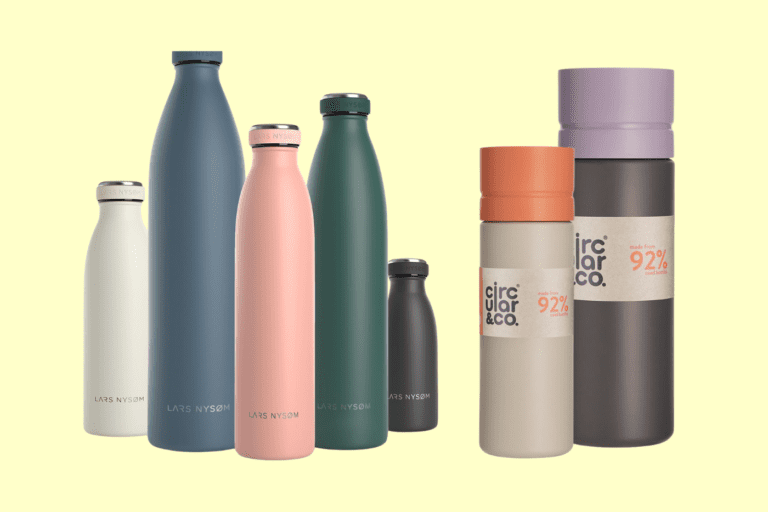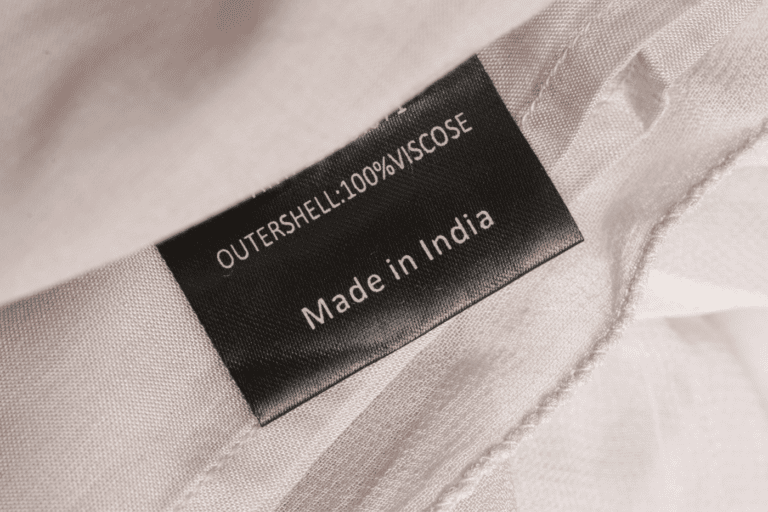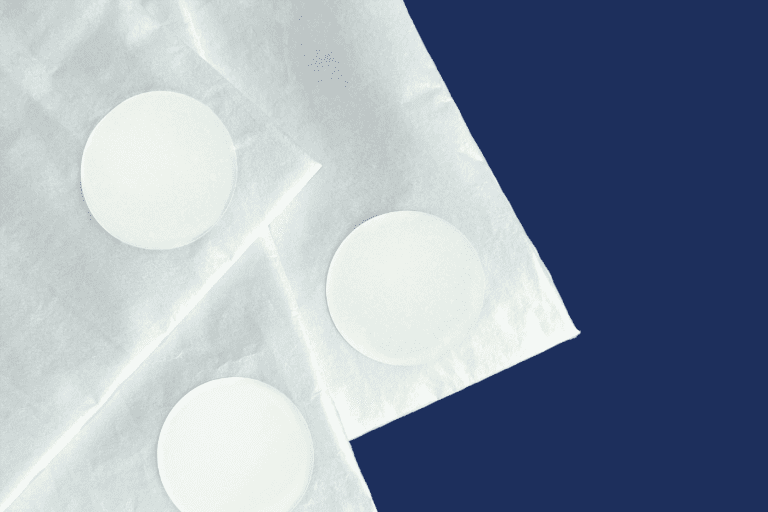Are you feeling torn between the crispness of linen and the softness of cotton? Or maybe you’re wondering which fabric aligns better with your values and the planet’s well-being.
Well, you’re in the right place! In this Linen vs Cotton exploration, we’ll break down the sustainability of both linen and cotton, leaving you with a clear understanding and a confident choice for your next purchase.
What is Linen?
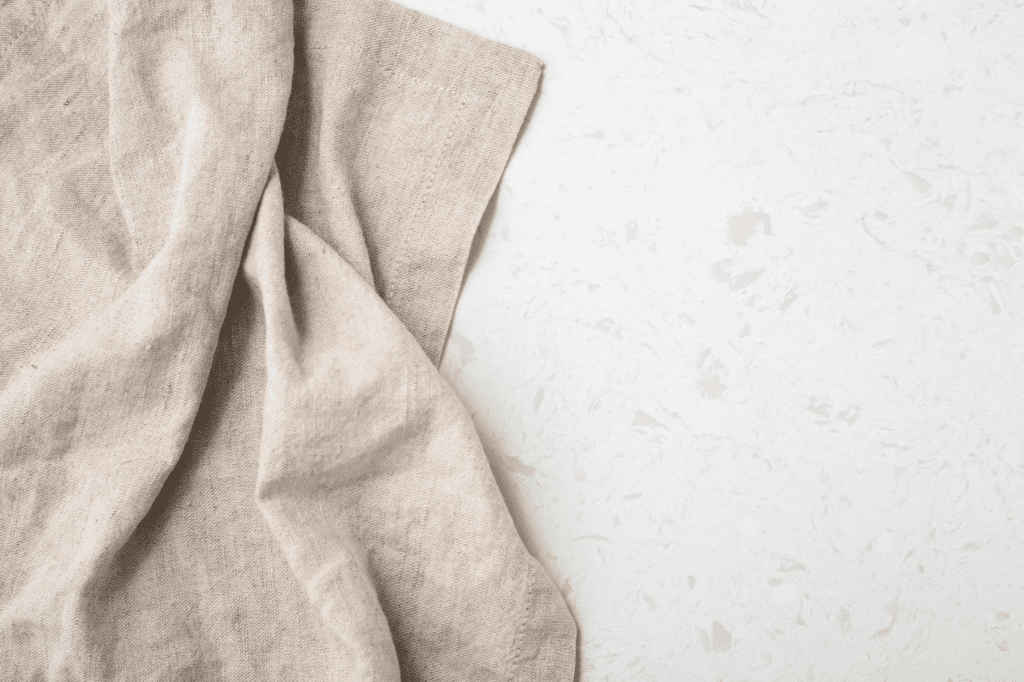
Linen is a natural fabric made from the fibers of the flax plant. It’s been around for ages and is renowned for its durability, breathability, and luxurious feel.
Linen is often used in clothing, bedding, and various household items due to its versatility and timeless appeal. It has a crisp texture and natural luster, making it ideal for warm-weather clothing.
Linen is also celebrated for its sustainability, as flax plants require minimal water and pesticides to grow, and virtually all parts of the plant can be used, resulting in minimal waste. Additionally, linen is biodegradable and recyclable, making it an eco-friendly choice.
For more in-depth information on linen, check out this article: What is Linen and How Sustainable is it?. If you are interested in buying sustainable linen clothes check out: The 5 Best Sustainable Linen Clothing Brands.
What is Cotton?
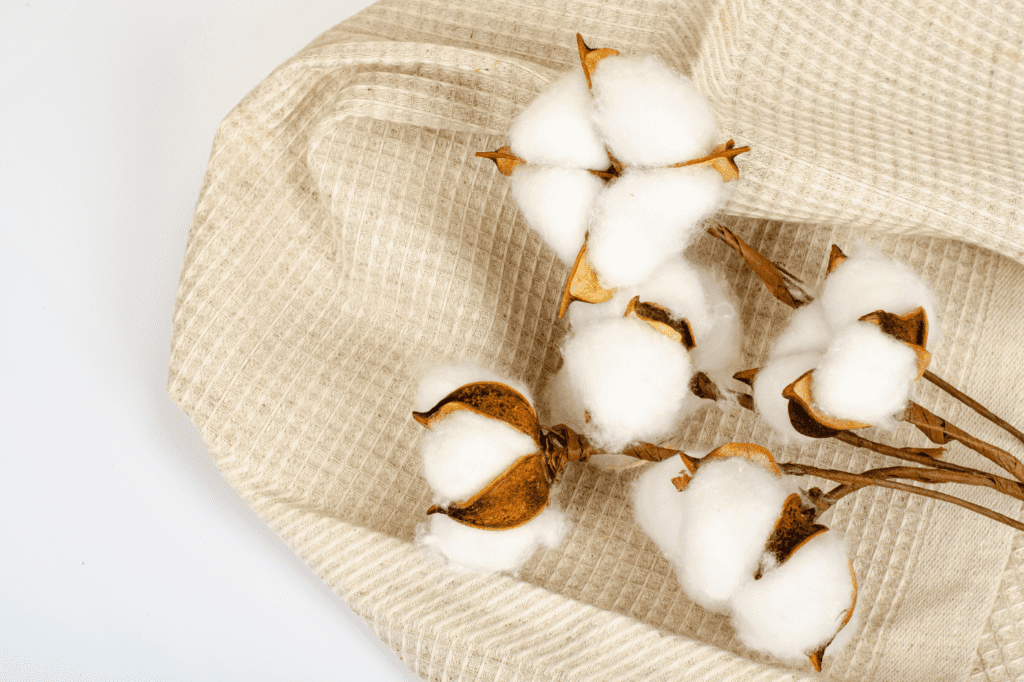
Cotton is another natural fiber that’s widely used in the textile industry. It comes from the fluffy fibers surrounding the seeds of the cotton plant.
Cotton is known for its softness, breathability, and versatility, making it a popular choice for clothing, bedding, and various other textiles. It’s comfortable to wear and easy to care for, making it a staple in many wardrobes.
However, cotton production can be pretty harsh on the environment. We need tons of water, pesticides, and land to grow cotton. Plus, the way cotton is farmed can damage the soil and lead to a loss of biodiversity.
The good news is that we’re seeing progress in making cotton production sustainable through organic and fair trade certification.
Is Linen Better Than Cotton?
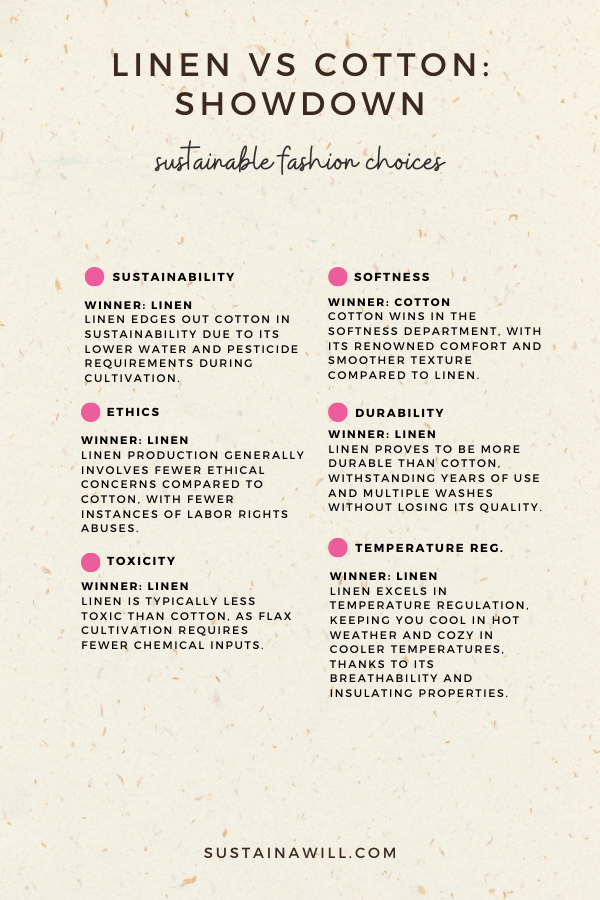
Linen and cotton are both popular choices for textiles, but how do they stack up in terms of sustainability, ethics, toxicity, and softness? Let’s compare:
Is Linen more Sustainable than Cotton?
Linen: Linen is often considered more sustainable than cotton. Flax, the plant used to make linen, requires less water and fewer pesticides than cotton, making it a more environmentally friendly option.
Cotton: While cotton is a natural fiber, it’s notorious for its high water and pesticide usage, as well as its heavy reliance on intensive farming practices. However, organic and sustainable cotton farming methods are emerging to mitigate these issues.
Winner
Linen. Linen edges out cotton in sustainability due to its lower water and pesticide requirements during cultivation.
Is Linen more Ethical than Cotton?
Linen: Linen production generally involves fewer ethical concerns compared to cotton. Flax cultivation tends to be less labor-intensive and less associated with issues such as forced labor or child labor.
Cotton: The cotton industry has a history of labor rights abuses, including forced labor and child labor in some regions. However, initiatives such as Fair Trade and organic certifications aim to improve labor conditions and promote ethical practices within the cotton industry.
Winner
Linen. Linen production generally involves fewer ethical concerns compared to cotton, with fewer instances of labor rights abuses.
Is Linen less Toxic than Cotton?
Linen: Linen is typically less toxic than cotton. Flax cultivation requires fewer chemical inputs, resulting in fewer pesticides and chemical residues in the final product.
Cotton: Conventional cotton farming often involves heavy pesticide and herbicide use, which can contribute to environmental pollution and pose health risks to farmers and communities. However, organic cotton farming avoids these chemicals, resulting in a safer and more eco-friendly product.
Winner
Linen. Linen is typically less toxic than cotton, as flax cultivation requires fewer chemical inputs.
Is Linen as Soft as Cotton?
Linen: Linen has a unique texture that some people find rougher or coarser than cotton, especially when new. However, linen tends to soften with each wash and wear, developing a luxurious feel over time.
Cotton: Cotton is renowned for its softness and comfort, making it a popular choice for clothing and bedding. It typically has a smoother texture than linen, especially in its initial state.
Winner
Cotton. Cotton wins in the softness department, with its renowned comfort and smoother texture compared to linen.
Linen vs Cotton Verdict
In conclusion, linen clearly is the more sustainable and less toxic option.
But for those who crave softness and are considering alternatives to linen, certified organic cotton presents an excellent option. (Still, linen is clearly the more eco-friendly option!)
By opting for certified organic cotton, you can enjoy the softness and comfort synonymous with cotton while supporting environmentally conscious and socially responsible practices in the fashion industry.
Takeaway
In conclusion, when it comes to the sustainability showdown between linen and cotton, linen emerges as the eco-friendly champion, boasting lower water and pesticide usage and fewer ethical concerns in production.
However, if softness is your top priority, certified organic cotton provides a comfortable alternative with its plush texture and ethical certifications.
![Pinterest optimized image showing the post title and web address for - [x] Linen vs Cotton: Which is more Sustainable? (Easy Explanation)](https://sustainawill.com/wp-content/uploads/2024/02/Pin-Images-2024-02-11T123838.986.png)

